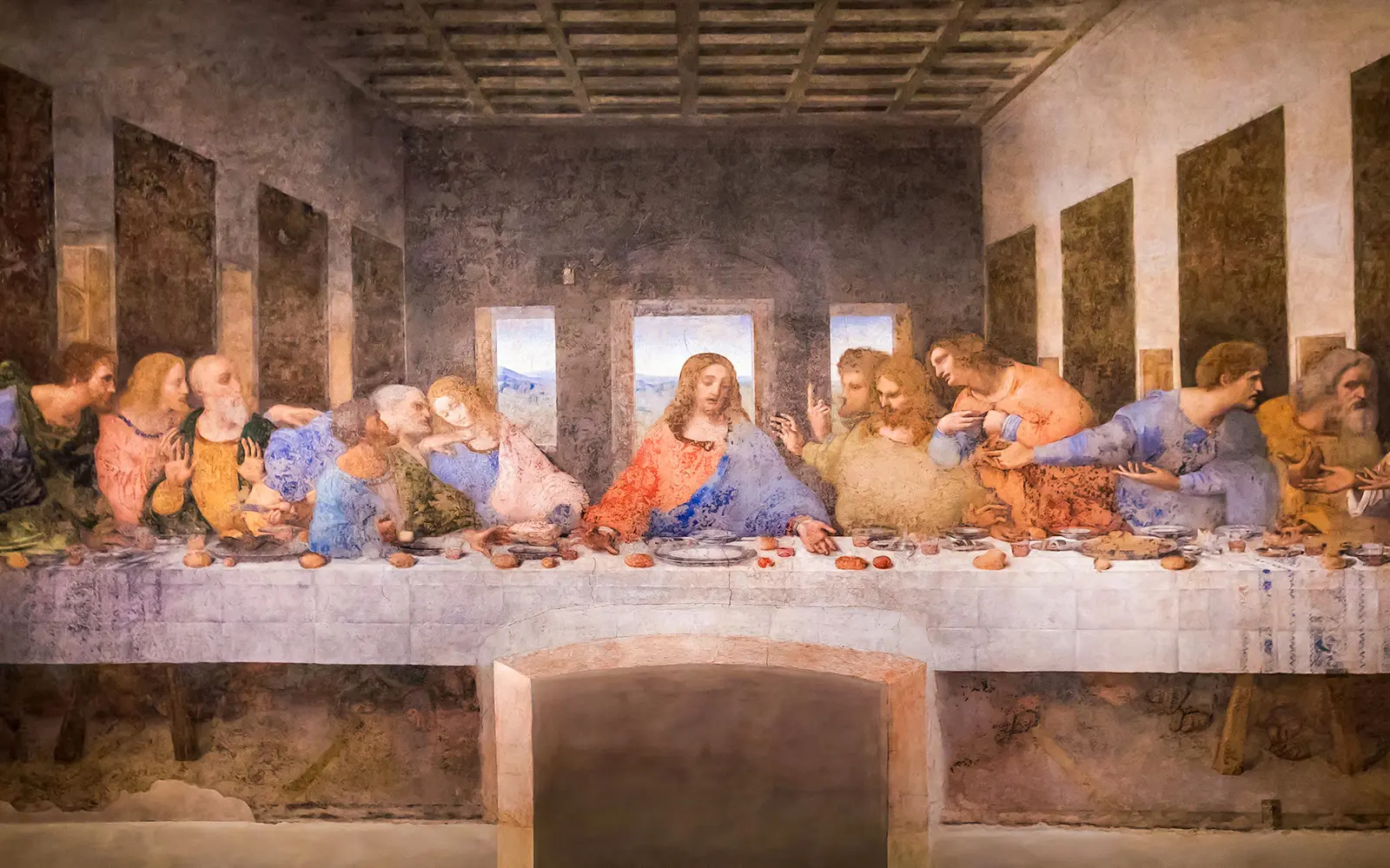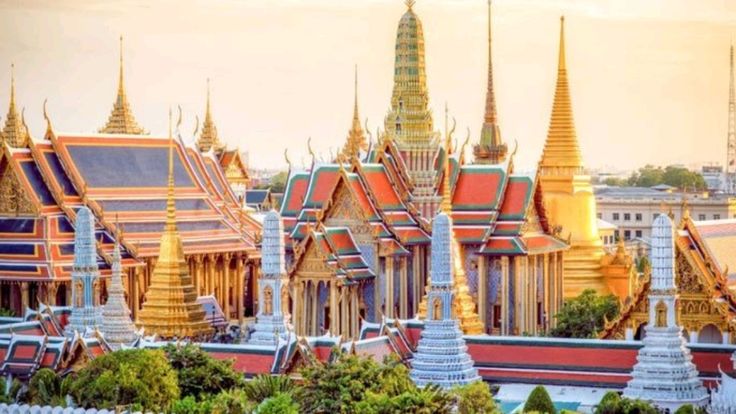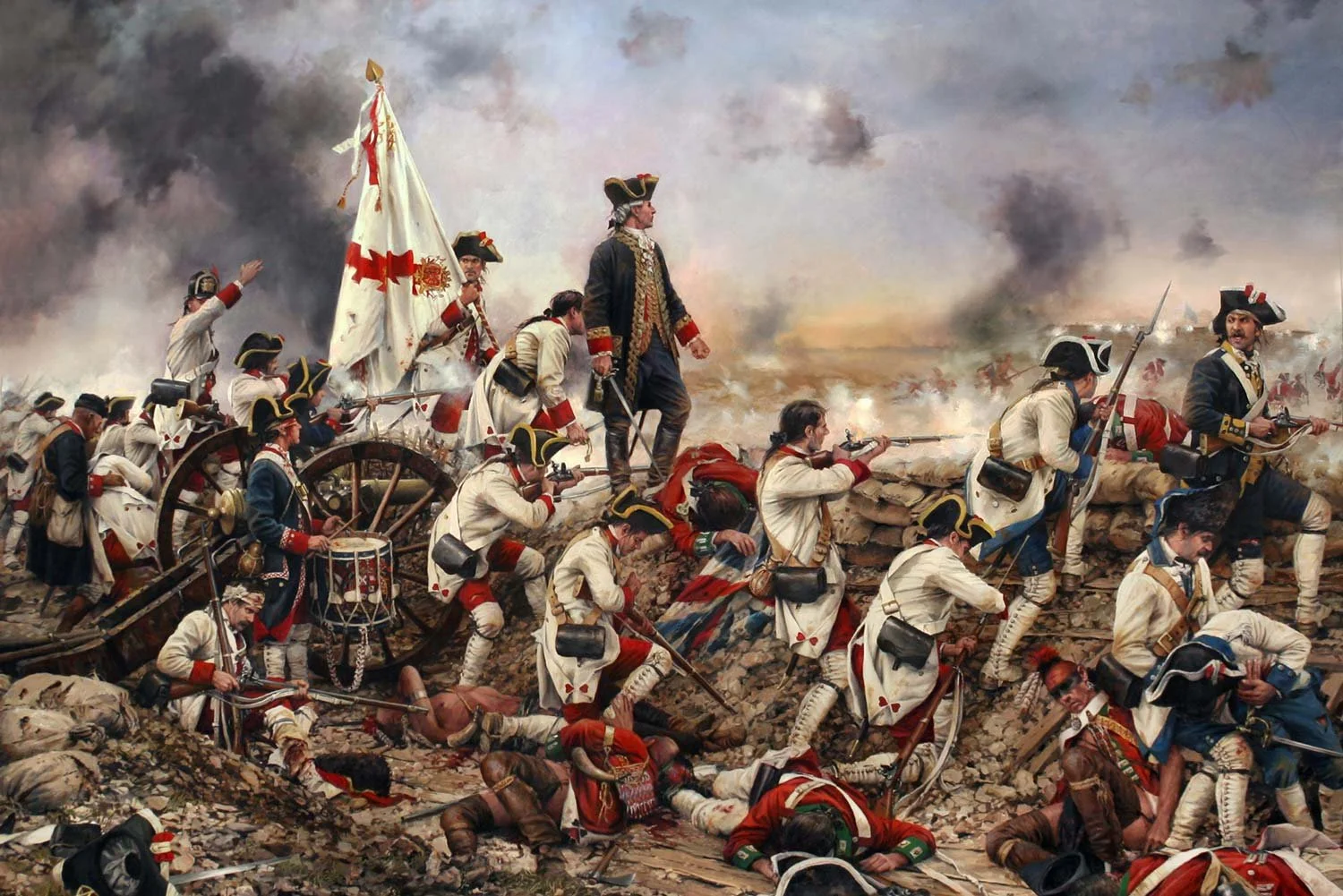The Last Supper is a masterpiece of art that has captivated audiences for centuries. This iconic painting, created by the legendary Renaissance artist Leonardo da Vinci, depicts a pivotal moment in the life of Jesus Christ and his disciples. Set in the final days before the crucifixion, the scene captures the emotional intensity of the last meal they shared together.
Da Vinci’s work on The Last Supper began in 1495 when he was commissioned by the Duke of Milan, Ludovico Sforza, to paint a mural in the refectory of the Convent of Santa Maria delle Grazie. This was a significant undertaking, as the painting would cover an entire wall, measuring an impressive 15 by 29 feet. The project was a prestigious one, and da Vinci was tasked with creating a work that would not only be visually stunning but also convey the profound significance of the biblical event it portrayed.
At the time, the depiction of religious scenes was a common practice in European art, particularly in the context of church and monastery commissions. However, da Vinci’s approach to The Last Supper was unique, as he sought to infuse the painting with a sense of drama and emotion that was unprecedented in religious art. By carefully composing the scene and paying meticulous attention to the expressions and gestures of the figures, da Vinci created a work that transcended the traditional boundaries of religious iconography and became a masterpiece of Western art.
Symbolism in “The Last Supper”
Contents
- 1 Symbolism in “The Last Supper”
- 2 Composition and perspective in the painting
- 3 Techniques used by Leonardo da Vinci in “The Last Supper”
- 4 Restoration and preservation of “The Last Supper”
- 5 The impact and legacy of “The Last Supper”
- 6 Interpretations and controversies surrounding “The Last Supper”
- 7 Famous quotes and references to “The Last Supper” in popular culture
- 8 The enduring significance of Leonardo da Vinci’s “The Last Supper”
- 9 Author
The Last Supper is rich in symbolism, reflecting the profound significance of the event it portrays. Da Vinci’s painting captures the moment when Jesus reveals to his disciples that one of them will betray him, setting in motion the events that will lead to his crucifixion.
At the center of the composition is the figure of Jesus, who is depicted as the focal point of the scene. His raised hand and direct gaze convey a sense of authority and command, while the disciples surrounding him are shown in various states of emotion and reaction. The placement of the figures is deliberate, with the disciples arranged in groups of three, representing the Holy Trinity and the three-part division of the Christian church.
The table itself is a symbol of the Eucharist, the sacrament of communion in which Christians partake of bread and wine as a remembrance of Christ’s sacrifice. The placement of the dishes and the positioning of the figures suggest the ritual nature of the meal, with the bread and wine taking on a symbolic significance as the body and blood of Christ. Additionally, the presence of the salt cellar, which is overturned, is thought to represent the betrayal of Judas, who is seated closest to the salt cellar and is often depicted as the disciple who will betray Jesus.
Composition and perspective in the painting
The composition of The Last Supper is a masterful example of da Vinci’s artistic genius. The painting is structured around a central vanishing point, which creates a sense of depth and perspective that draws the viewer into the scene. The figures are arranged in a balanced and symmetrical manner, with Jesus at the center and the disciples flanking him on either side.
The use of perspective is particularly striking in The Last Supper. Da Vinci employed a technique known as “one-point perspective,” which was a revolutionary approach to creating the illusion of depth on a two-dimensional surface. By aligning the figures and architectural elements along a single vanishing point, da Vinci was able to create a sense of depth and spatial awareness that was unprecedented in religious art at the time.
The perspective in The Last Supper also serves to highlight the emotional intensity of the scene. The disciples are depicted in various states of reaction, with some expressing shock, others contemplation, and others even betrayal. The positioning of the figures, combined with the use of perspective, creates a sense of drama and tension that heightens the overall impact of the painting.
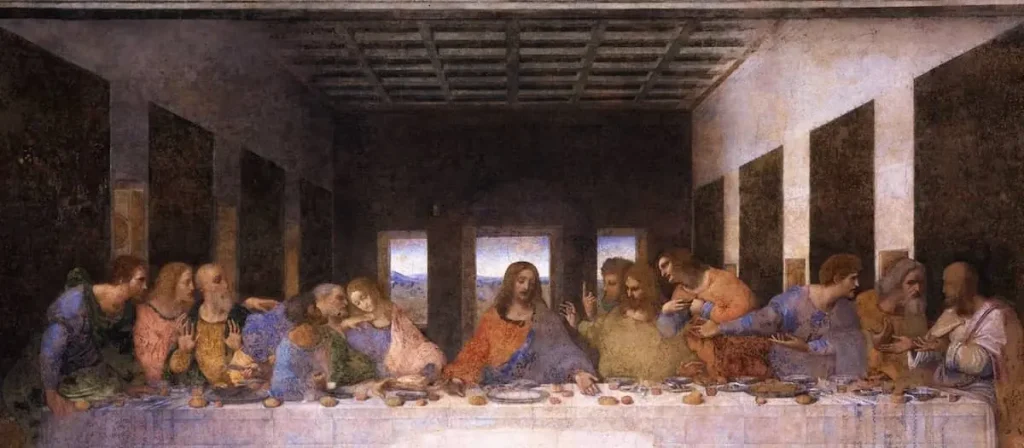
Techniques used by Leonardo da Vinci in “The Last Supper”
Leonardo da Vinci’s mastery of various artistic techniques is on full display in The Last Supper. From his use of chiaroscuro to his attention to detail, da Vinci’s virtuosity as a painter is evident in every aspect of the work.
One of the most striking features of The Last Supper is da Vinci’s use of chiaroscuro, a technique that involves the use of light and shadow to create depth and volume. By carefully controlling the interplay of light and dark, da Vinci was able to create a sense of three-dimensionality that was highly unusual for the time. The figures appear to emerge from the darkness, their features and expressions illuminated by the soft glow of the light.
In addition to his use of chiaroscuro, da Vinci also demonstrated his exceptional attention to detail in The Last Supper. Every element of the painting, from the folds of the disciples’ robes to the intricate patterns on the tablecloth, is rendered with meticulous precision. This level of detail not only adds to the overall visual impact of the work but also serves to draw the viewer in, inviting them to explore the painting’s many layers of meaning.
Another technique employed by da Vinci in The Last Supper is his use of gesture and expression to convey the emotional intensity of the scene. The disciples are depicted in a range of poses and expressions, from the shocked realization of Judas to the contemplative gaze of Peter. By carefully studying the human form and the nuances of facial expression, da Vinci was able to create a painting that is not only visually stunning but also deeply affecting on an emotional level.
Restoration and preservation of “The Last Supper”
The preservation and restoration of The Last Supper has been a long and complex process, reflecting the painting’s importance and the challenges posed by its medium and environment.
Over the centuries, The Last Supper has faced numerous threats to its survival, including environmental factors, damage from restoration attempts, and the ravages of time. The painting was originally executed on the wall of the refectory using a technique known as “secco,” which involved applying pigments to a dry plaster surface. This method, while innovative, was also highly vulnerable to deterioration, and the painting began to fade and flake almost immediately after its completion.
In the centuries that followed, various attempts were made to restore and preserve The Last Supper, with mixed results. In the 18th century, for example, the painting was covered with a layer of varnish that ultimately caused further damage to the delicate surface. Later restoration efforts in the 19th and 20th centuries also had a significant impact on the painting, with some techniques causing more harm than good.
In the late 20th century, a major restoration project was undertaken to stabilize and preserve The Last Supper. This extensive effort, which took over 20 years to complete, involved carefully removing centuries of damage and restoring the painting to as close to its original condition as possible. The restoration process was a painstaking one, requiring the use of advanced technologies and the expertise of a team of highly skilled conservators.
The impact and legacy of “The Last Supper”
The Last Supper is a masterpiece that has had a profound and lasting impact on the world of art and culture. Da Vinci’s depiction of this pivotal biblical moment has become one of the most iconic and recognizable works of art in the Western canon, inspiring countless interpretations, references, and adaptations over the centuries.
One of the most significant aspects of The Last Supper’s legacy is its influence on the development of Western art. Da Vinci’s innovative use of perspective, chiaroscuro, and attention to detail set a new standard for religious painting, and his work has been studied and emulated by artists for generations. The Last Supper is widely regarded as a landmark in the transition from the medieval to the Renaissance style, and its impact can be seen in the work of countless artists who followed in da Vinci’s footsteps.
Beyond its artistic significance, The Last Supper has also had a profound impact on religious and cultural iconography. The painting’s depiction of the final moments before Jesus’ crucifixion has become a central image in Christian art and theology, and it has been the subject of countless interpretations and analyses by scholars, theologians, and art historians. The Last Supper has also been referenced and reimagined in a wide range of popular culture, from literature and film to music and advertising.
Despite the challenges it has faced over the centuries, The Last Supper remains a testament to the enduring power of art to captivate and inspire. Da Vinci’s masterpiece continues to be a source of fascination and wonder, drawing visitors from around the world to the Church of Santa Maria delle Grazie in Milan, where it is housed. The Last Supper is not only a work of art but also a cultural touchstone that has left an indelible mark on our collective consciousness.
Interpretations and controversies surrounding “The Last Supper”
The Last Supper has been the subject of countless interpretations and controversies over the centuries, reflecting the depth and complexity of da Vinci’s masterpiece. From theological debates to conspiracy theories, the painting has inspired a wide range of perspectives and interpretations, each offering a unique lens through which to understand this iconic work of art.
One of the most enduring controversies surrounding The Last Supper is the question of Judas’s identity and placement within the painting. Da Vinci’s depiction of Judas, the disciple who betrayed Jesus, has been the subject of much debate and analysis. Some scholars have argued that Judas is not easily identifiable in the painting, while others have claimed that da Vinci deliberately obscured or hidden Judas’s identity, perhaps as a commentary on the nature of betrayal and the complexities of human nature.
Another point of contention is the interpretation of the gestures and expressions of the disciples. Da Vinci’s attention to detail and his ability to capture the nuances of human emotion have led to a wide range of interpretations of the disciples’ reactions to Jesus’s announcement of his betrayal. Some scholars have argued that da Vinci’s depiction of the disciples reflects a deeper understanding of human psychology and the complexities of group dynamics, while others have seen the painting as a reflection of da Vinci’s own personal beliefs and philosophical perspectives.
In recent years, The Last Supper has also been the subject of various conspiracy theories and alternative interpretations. Some have claimed that da Vinci embedded hidden messages or coded symbols within the painting, while others have suggested that the work reflects a broader critique of the Catholic Church or a hidden agenda on the part of the artist. These interpretations have been the subject of much debate and controversy, with scholars and art historians offering a range of perspectives on the meaning and significance of linetogel masterpiece.
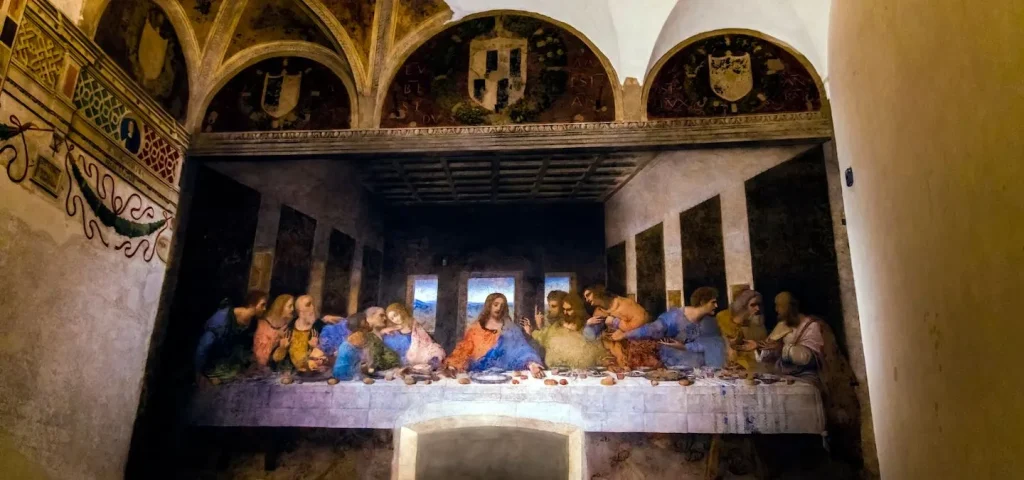
Famous quotes and references to “The Last Supper” in popular culture
The Last Supper has become so deeply embedded in our cultural consciousness that it has inspired countless references and quotations in popular culture. From literature and film to music and advertising, da Vinci’s masterpiece has been the subject of countless homages and interpretations, each offering a unique perspective on this iconic work of art.
One of the most famous references to The Last Supper can be found in Dan Brown’s novel “The Da Vinci Code,” which sparked a renewed interest in the painting and its potential hidden meanings. In the book, the protagonist, Robert Langdon, analyzes the painting in detail, offering a controversial interpretation of the work that has been the subject of much debate and controversy.
In the realm of film, The Last Supper has been the subject of numerous adaptations and references. In the 1995 film “Se7en,” for example, the killer’s final victim is arranged in a pose that directly references da Vinci’s painting, creating a chilling and unsettling connection between the biblical scene and the film’s dark themes.
In the world of music, The Last Supper has also been the subject of numerous references and interpretations. The iconic painting has been the inspiration for various musical works, including compositions by composers such as Olivier Messiaen and John Zorn, each offering a unique perspective on the painting’s themes and symbolism.
Beyond these direct references, The Last Supper has also become a cultural shorthand for a range of themes and ideas, from the notion of betrayal and sacrifice to the power of art to transcend time and space. The painting’s enduring impact on our collective consciousness is a testament to the enduring power of da Vinci’s artistic vision and the profound significance of the biblical moment it depicts.
The enduring significance of Leonardo da Vinci’s “The Last Supper”
The Last Supper is a masterpiece that has captivated audiences for centuries, and its enduring significance is a testament to the genius of its creator, Leonardo da Vinci. From its historical context to its symbolic and artistic elements, The Last Supper is a work of art that continues to inspire and fascinate, offering a window into the profound and complex world of religious art and iconography.
Da Vinci’s masterful use of composition, perspective, and technique in The Last Supper has set a new standard for religious painting, and his work has had a lasting impact on the development of Western art. The painting’s ability to convey the emotional intensity of the biblical moment it portrays, combined with its meticulous attention to detail, has made it a touchstone of cultural and artistic significance.
Despite the challenges it has faced over the centuries, The Last Supper remains a testament to the enduring power of art to captivate and inspire. From its role in shaping religious and cultural iconography to its continued influence on popular culture, da Vinci’s masterpiece continues to be a source of fascination and wonder, inviting viewers to explore the depth and complexity of its meaning and significance.
As we continue to study and appreciate The Last Supper, we are reminded of the transformative power of art to connect us to the past, to engage our emotions and intellect, and to inspire us to see the world in new and profound ways. Da Vinci’s masterpiece is not just a work of art, but a testament to the enduring human desire to make sense of the world around us, to find meaning in the sacred, and to create something that will endure long after we are gone.
Also read: Pride and Prejudice: Exploring Love, Society, and Morality in Jane Austen’s Classic

